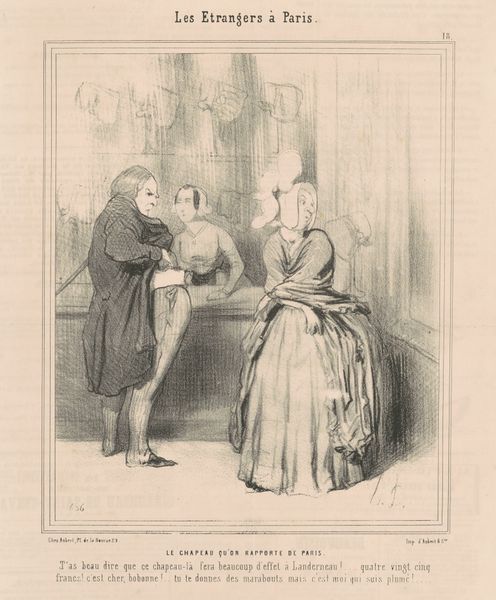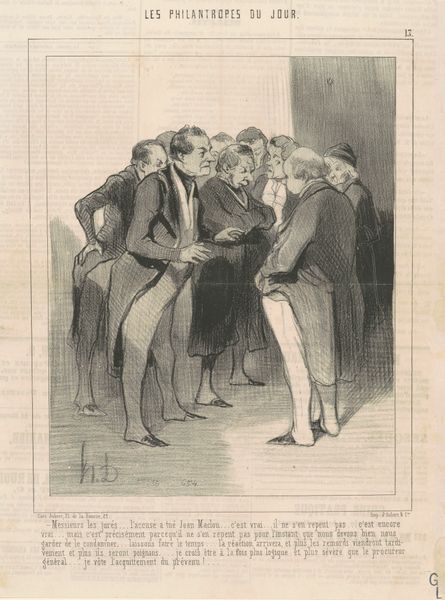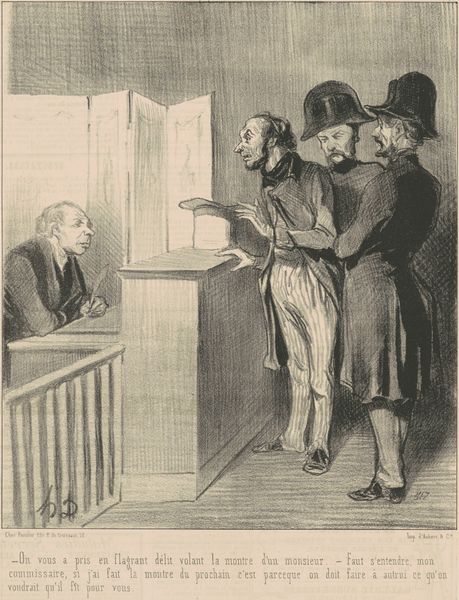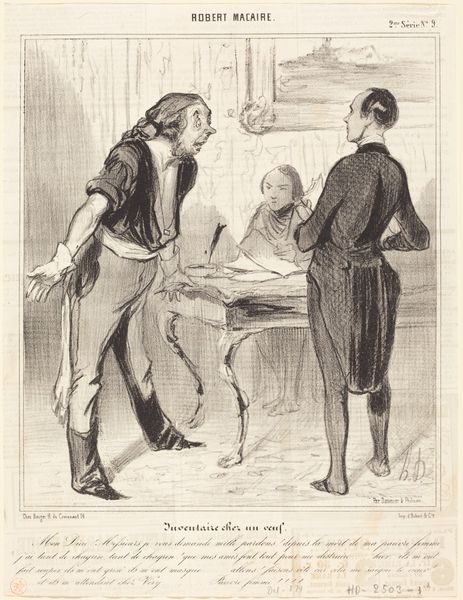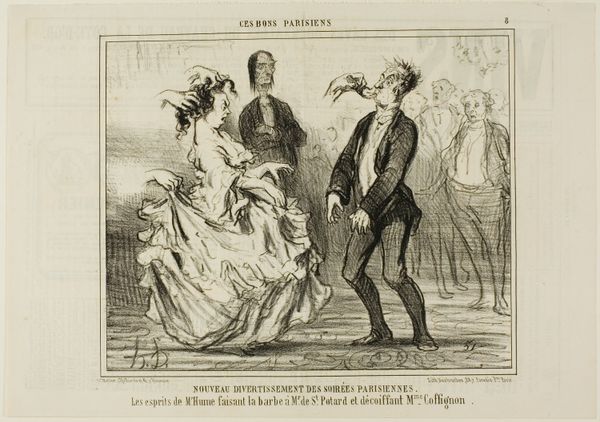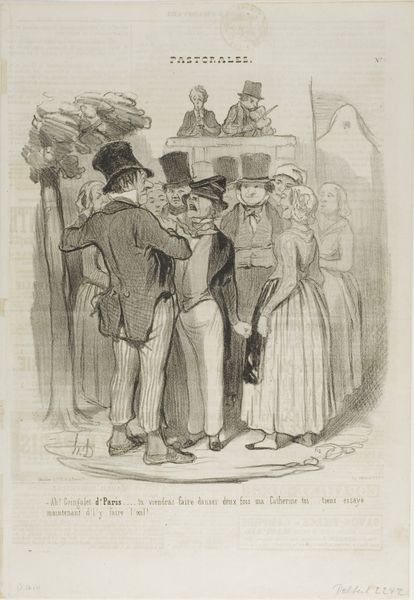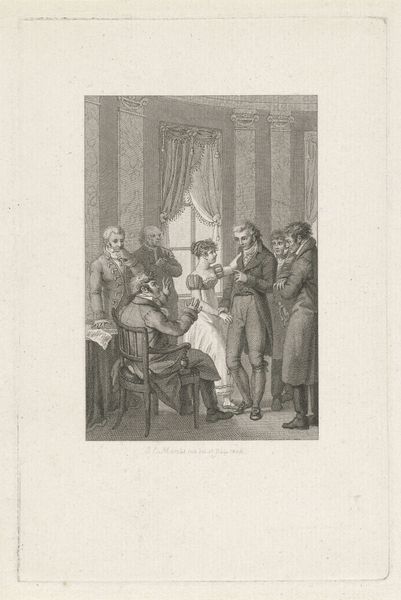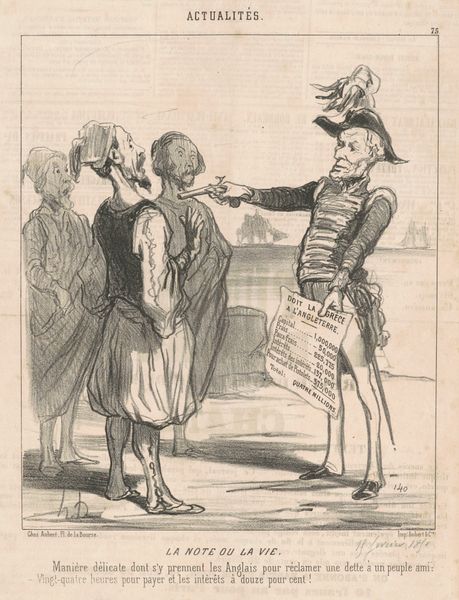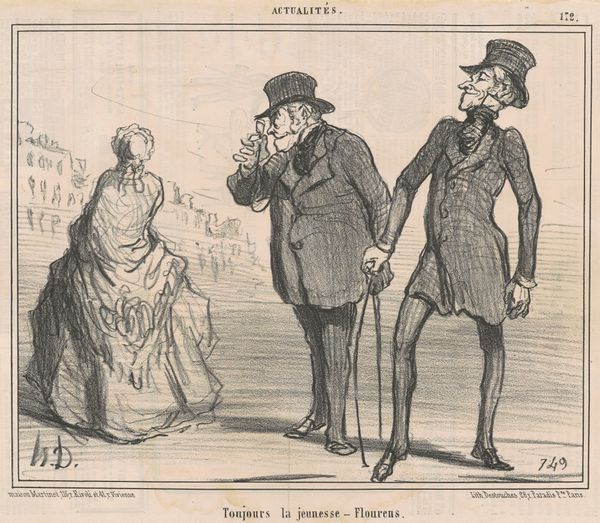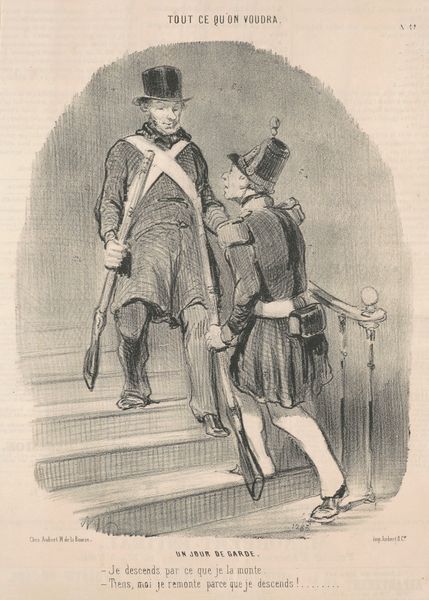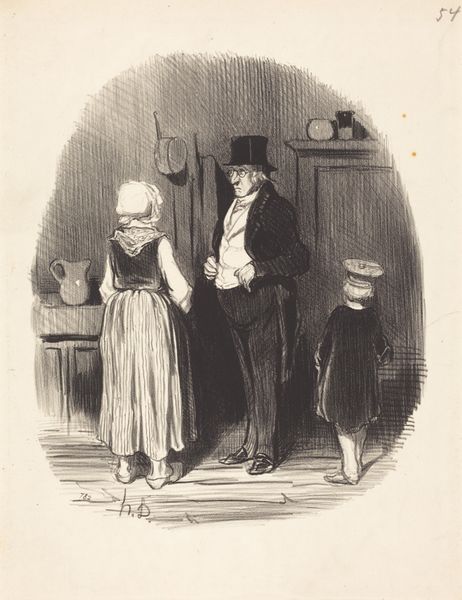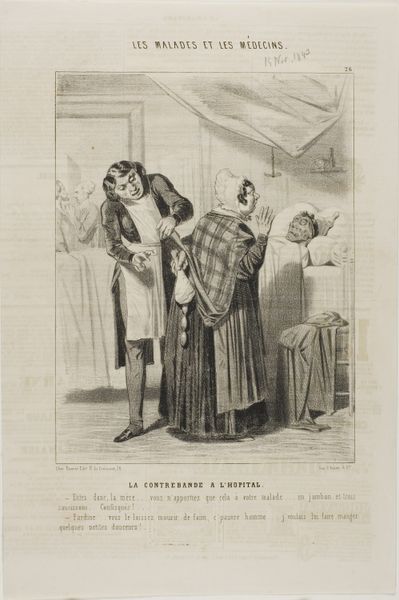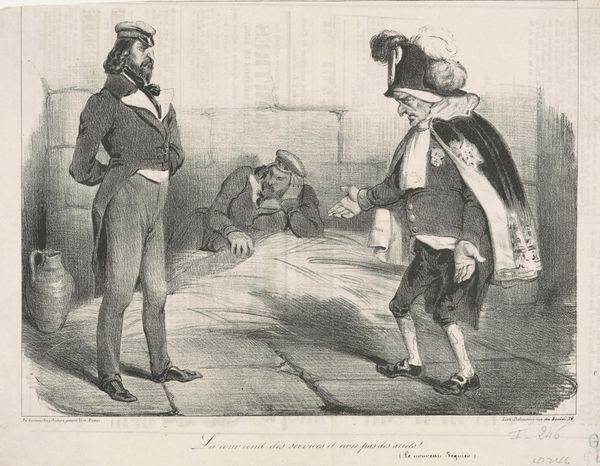
lithograph, print
#
narrative-art
#
lithograph
# print
#
caricature
#
figuration
#
romanticism
#
genre-painting
Copyright: National Gallery of Art: CC0 1.0
Curator: Let's turn our attention to this intriguing lithograph by Honoré Daumier, created around 1845. The title, "Comme quoi, au village, la vertu la plus grêlée..." translates to "How, in the village, the most tarnished virtue..." Editor: Oh, immediately the skewed perspective, the almost grotesque exaggeration of the figures. It feels deeply satirical, imbued with a certain dark humor. The shading is quite striking, lending a dramatic air to the mundane village scene. Curator: Indeed, Daumier uses caricature to highlight the societal hypocrisy prevalent at the time. Notice the composition. The lithograph is arranged around the central act of bestowing some type of symbolic recompense on the bowing woman, presumably by an authority figure. Editor: Exactly! This looks to me to be a condemnation of systems that reward outward appearances while masking internal struggles. What reward awaits, and at what cost? The composition directs your eyes to that moment. It’s about transactional power dynamics; and this so-called "virtue" being nothing more than a commodity exchanged between actors caught in societal constraints. Curator: Precisely. Note how Daumier has structured the crowd behind the woman—a row of indistinct, watching faces further emphasizing her isolation even as she's seemingly being honored publicly. There is certainly an awareness of spatial structure at work. The arrangement adds a formal tension, underscoring the fraught social situation at play. Editor: The satirical undertones feel revolutionary. I can see elements challenging conservative bourgeois values. Daumier offers us not just characters but agents reflecting contemporary social forces and political critique within quotidian village affairs. Curator: I think both form and content reflect Daumier's particular artistry; using lithography to make these comments about humanity available for popular consumption. Editor: Ultimately, this is far more than a simple illustration; it’s a testament to the lasting resonance of social critique visualized, inviting endless possibilities in reading human relations.
Comments
No comments
Be the first to comment and join the conversation on the ultimate creative platform.
